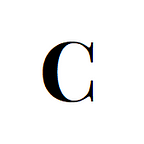A Closer Look At Vintage Angelus Chronographs
'Form follows function.’ It’s a cliché phrase, but 100 percent true when dealing with many Angelus watches.
Founded in Le Locle by two brothers in 1891, Angelus was a well-known watch and clock manufacturer of its day. Accelerating quickly from a constructor to a full-fledged movement maker, they began manufacturing chronographs utilizing an 'in-house' movement in 1935.
Of course, the 'wrist chronograph' market was much smaller in the mid-thirties compared to the present day. The added bulk, complexity, and expense of these machines meant that only people who really wanted one bought one. This desire for practicality also affected the design language of the watches; these were pieces that were meant to be legible, meant to be used.
It was the beginning of what we would now call the 'Tool Watch' segment; timepieces built for specific purposes. One group keen on accurate timing was the world’s militaries; the Egyptian Navy used Angelus movements while testing some of the first ever Luminor Panerai watches in the 1950s. The Hungarian Air Force also gave Angelus chronographs to its pilots for use in the air between 1948 and 1950.
This utilitarian design ethos even spread to the actual size of Angelus watches. While other brands usually stayed around 34mm, many Angelus chronographs measure in at 37mm or larger. They also 'wear large' due to their dial size and flat cases.
Again, this was a design decision. While some chronograph makers looked at the devices as upscale tools (and kept the watch dimensions small,) Angelus instead made their products larger for more readability and safety.
This is important to modern buyers, because it means an Angelus watch wears much more like a modern piece compared to many of its vintage counterparts.
The most famous Angelus vintage watch is the Chronodato, the first-ever wristwatch with a day-date and month calendar. As one might think, creating this watch was a huge coup for the company. The Chronodato had a ten-year production span, and was even the most-sold watch in Switzerland for a little while. Not bad for a little crew in Le Locle!
Angelus as a manufacturer was most active from the thirties until the late sixties; basically the 'golden age' of midcentury watchmaking. They’re not as well-known as Universal Geneve in collector circles, but probably up there with Gallet and Excelsior Park as a quality purveyor of chronographs.
Unfortunately like many watch firms, Angelus became a victim of the quartz crisis in the 70s. It’s 'back' now, but the new owners don’t really have any connections to the old ones. They also don’t re-release any of the old pieces, but instead make modern stuff.
As one might think, the easiest Angelus watch to find on the vintage market is the Chronodato. They made a decent amount of them, and the watch’s top-of-the-range feature set and positioning meant original owners usually valued the watches quite highly.
The 'standard' chronographs were made in much smaller numbers, and as mentioned earlier were designed for professional and military use. Finding these are tougher, but still possible.
Of these, the black-dialed gilt examples are most prized, althought the white-dialed military-style watches are also rising in price as of late. Like all vintage watches, condition and originality are paramount when assessing prices.
If you like these watches and other content concerning art, architecture, fast cars & classic photos, subscribe to the @curated.classics Instagram and check out our web page. Thanks for reading!
Special shout-out to our contributor @erikclabaugh on Instagram for the cover photo of this article.
